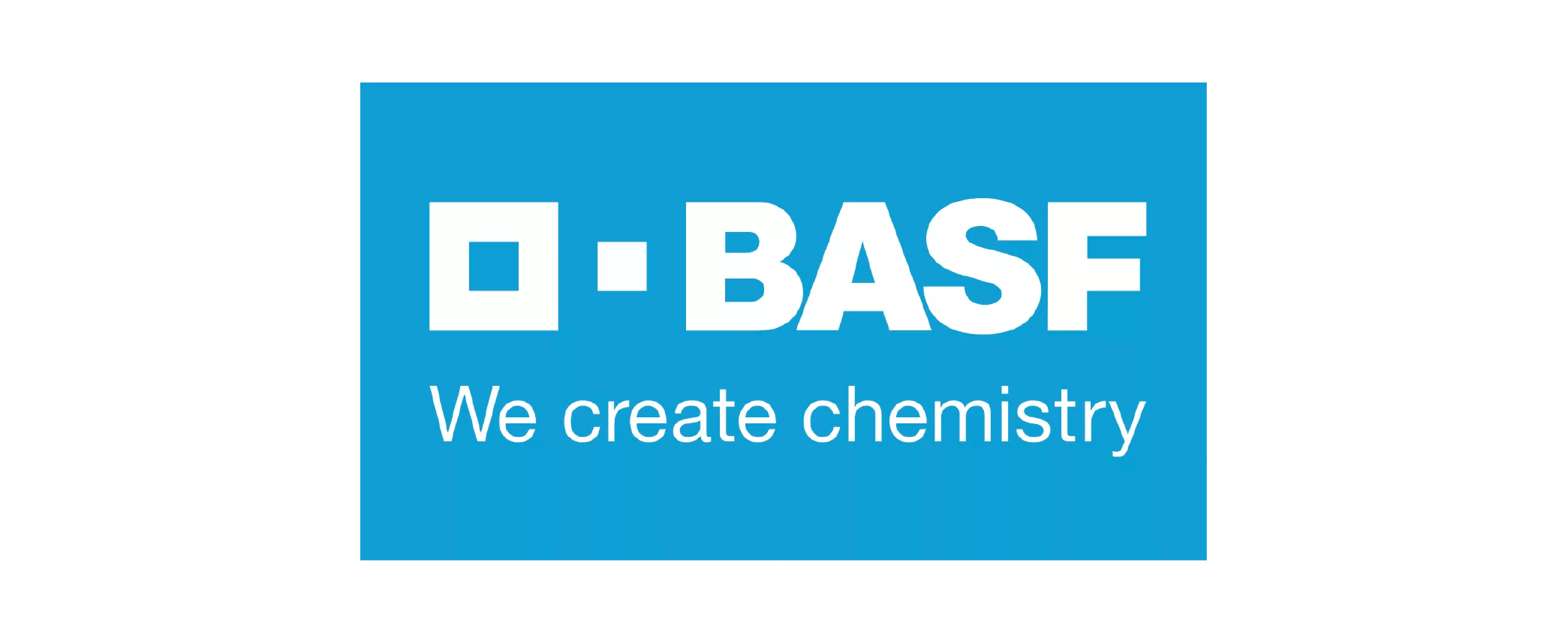The global Flexible Electronics Market size was valued at USD 40 Billion in 2024 and is projected to expand at a compound annual growth rate (CAGR) of 20% during the forecast period, reaching a value of USD 200 Billion by 2032.
The "Flexible Electronics Market Research Report" by Future Data Stats provides an in-depth examination of the market landscape, utilizing historical data from 2021 to 2023 to identify key trends and growth patterns. Setting 2024 as the foundational year, the report explores consumer behavior, competitive forces, and regulatory frameworks that influence the industry. It transcends basic analysis, delivering a thoroughly researched forecast extending from 2025 to 2033. By employing sophisticated data analysis methodologies, the report not only outlines the market's growth trajectory but also uncovers emerging opportunities and foresees potential obstacles, empowering stakeholders with vital insights to adeptly navigate the changing market landscape.
MARKET OVERVIEW:
Flexible electronics represent a new wave of innovation where electronic circuits and components are built on flexible substrates like plastic, metal foil, or paper. Unlike traditional rigid systems, these electronics can bend, fold, and stretch without compromising functionality. This adaptability opens up possibilities for lighter, thinner, and more durable electronic products across a range of industries. In the market context, flexible electronics enable the creation of advanced applications such as foldable displays, wearable health monitors, smart packaging, and curved automotive dashboards. Companies leverage this technology to design next-generation products that meet the growing demand for portability, customization, and energy efficiency. As a result, flexible electronics continue to gain traction as a transformative force in consumer electronics, healthcare, automotive, and beyond.
MARKET DYNAMICS:
Flexible electronics are reshaping how industries approach design and functionality, with recent trends highlighting the integration of these components into wearables, foldable displays, and smart medical devices. Companies are actively investing in lightweight, bendable materials that support thinner and more efficient products. Advancements in printed and organic electronics are also expanding manufacturing possibilities, making production faster and more cost-effective. Looking ahead, upcoming trends point toward greater adoption in healthcare, automotive, and energy sectors. Businesses are exploring flexible sensors for remote patient monitoring, adaptive lighting systems in vehicles, and stretchable solar panels for renewable energy solutions. As innovation continues, the flexible electronics market is opening new avenues for product development, customization, and cross-industry collaborations, offering significant growth potential for forward-thinking enterprises.
Companies are innovating to create flexible displays, sensors, and wearable devices that offer enhanced user experiences. The rising adoption of Internet of Things (IoT) applications further propels this market, as flexible electronics play a crucial role in connecting various smart devices. Additionally, the automotive sector is increasingly integrating flexible electronics for dashboard displays and safety features, reflecting a shift towards more adaptable technology in everyday applications. Manufacturers are working to overcome these obstacles by investing in research and development to improve the longevity and efficiency of flexible electronic components. Opportunities abound in emerging markets, where the demand for innovative consumer electronics continues to rise. As sustainability becomes a priority, companies are also exploring eco-friendly materials, opening new avenues for growth in the flexible electronics sector. The combination of technological advancements and market demand positions flexible electronics as a key player in the future of electronic devices.
FLEXIBLE ELECTRONICS MARKET SEGMENTATION ANALYSIS
BY TYPE:
The flexible electronics market is growing steadily as industries push for compact, lightweight, and adaptable technologies. Companies are shifting toward solutions that offer greater design freedom without sacrificing performance. As consumer demand rises for smart, portable, and energy-efficient devices, flexible electronics are emerging as a core component in product development. Among the key types, flexible displays lead the market due to their widespread use in smartphones, wearables, and foldable devices. Flexible sensors are also gaining momentum, especially in healthcare and industrial monitoring applications where accurate, real-time data is critical. These components enhance functionality while maintaining a slim and durable design.
Flexible batteries, photovoltaics, and circuits support the backbone of this technology shift by enabling seamless integration into various products. From powering wearables to supporting renewable energy solutions, these types drive innovation and market adoption. Their versatility and compatibility with next-gen devices continue to make them vital to the industry's advancement.
BY APPLICATION:
In consumer electronics, flexible displays and circuits enable sleeker, more portable devices, driving strong market demand. Companies continue to innovate with foldable smartphones, rollable TVs, and compact sensors, keeping consumer interest high. Healthcare is another dominant application, where flexible electronics support real-time monitoring, wearable diagnostics, and minimally invasive treatments. These technologies improve patient outcomes and enhance comfort, especially in long-term care settings. Automotive applications follow closely, with flexible sensors and displays contributing to smart dashboards, lighting systems, and driver-assist features.
Other expanding areas include industrial automation, military-grade electronics, energy harvesting devices, and smart packaging. Businesses across these sectors leverage flexibility for improved product design, efficiency, and resilience. As demand grows, the versatility of flexible electronics continues to unlock new business opportunities and market segments.
BY MATERIAL:
The flexible electronics market continues to expand as manufacturers seek materials that support lightweight, durable, and bendable designs. Material selection plays a critical role in shaping product performance and manufacturing efficiency. As innovation advances, companies focus on integrating materials that align with both function and flexibility. Substrates form the foundation of flexible electronics, with plastic leading due to its lightweight and cost-effective nature. Glass and metal substrates also find use in specific applications where strength or thermal stability is required. Meanwhile, conductive inks enable smooth electrical flow in flexible circuits, making them essential for printed electronics and wearable devices.
Dielectric and organic materials contribute to insulation, performance, and sustainability. Organic materials, in particular, are gaining traction for their potential in eco-friendly and biocompatible applications. These dominant material choices continue to drive flexibility, adaptability, and new product possibilities across the market.
BY COMPONENT:
Key components such as sensors, displays, and batteries play a central role in enabling these technologies. As industries prioritize innovation, the market sees strong momentum driven by the performance and integration of these components. Flexible sensors lead in applications like health monitoring, environmental tracking, and smart textiles. Displays follow closely, powering foldable phones, e-readers, and wearable screens. These components offer thin, lightweight alternatives to traditional hardware, helping manufacturers create sleeker, more responsive products.
Batteries, memory devices, and processors complete the system by supporting energy, storage, and computing needs. Flexible batteries allow seamless power integration, while compact memory and processing units enable real-time data handling. Together, these components push the boundaries of modern electronics and continue to fuel growth across sectors.
REGIONAL ANALYSIS:
North America leads in innovation, driven by strong research institutions and major tech companies that invest heavily in flexible displays, sensors, and wearables. The United States, in particular, benefits from well-established infrastructure and increasing demand across healthcare and consumer electronics sectors. Meanwhile, Europe shows steady advancement, with Germany and the UK promoting sustainable electronics and integration of flexible technology into automotive and industrial applications.
In Asia Pacific, countries like China, South Korea, and Japan are at the forefront of production and technological adoption. These nations combine advanced manufacturing capabilities with high consumer demand, especially in smartphones and smart textiles. Latin America sees gradual progress as Brazil and Mexico support electronic startups and import advanced technologies. In the Middle East and Africa, governments and private investors focus on smart infrastructure and renewable energy systems, creating opportunities for flexible electronic components to play a crucial role in future development.
MERGERS & ACQUISITIONS:
- In January 2024: BOE Technology acquired Visionox to strengthen its flexible OLED production capabilities.
- In February 2024: LG Display merged with Kyulux to enhance flexible OLED efficiency using Hyperfluorescence technology.
- In March 2024: E Ink Holdings acquired Gamma Dynamics to expand its flexible e-paper display portfolio.
- In April 2024: FlexEnable partnered with TCL CSOT to commercialize OTFT-based flexible displays.
- In May 2024: Samsung Electronics acquired Cynora (flexible OLED materials firm) to boost foldable display tech.
- In January 2024: Royole Corporation launched a new ultra-thin flexible AMOLED display for wearables.
- In February 2024: AU Optronics (AUO) unveiled a rollable 17-inch flexible OLED panel.
- In March 2024: Palo Alto Research Center (PARC) developed a self-healing flexible circuit for industrial IoT.
- In April 2024: Canatu introduced CNB (Carbon NanoBud) touch sensors for foldable devices.
- In May 2024: Plastic Logic announced flexible OTFT-based X-ray detectors for medical imaging.
- In June 2024: TactoTek secured funding to scale in-mold electronics (IME) production for automotive HMI.
KEY MARKET PLAYERS:
- Samsung Electronics
- LG Electronics
- Panasonic Corporation
- Sony Corporation
- Apple Inc.
- Flex Ltd.
- Palo Alto Networks
- AU Optronics (AUO)
- BOE Technology Group
- Royole Corporation
- Thin Film Electronics (Thinfilm)
- E Ink Holdings
- Cymbet Corporation
- Blue Spark Technologies
- Imprint Energy
- Plastic Logic
- FlexEnable
- NovaCentrix
- TactoTek
- Jabil Inc.
Flexible Electronics Market: Table of Contents
-
Executive Summary
-
Market Introduction
-
Research Methodology
-
Market Dynamics
-
Drivers
-
Restraints
-
Opportunities
-
Challenges
-
-
Market Trends and Insights
-
Flexible Electronics Market Segmentation
-
By Type
-
By Application
-
By Material
-
By Component
-
-
Regional Analysis
-
North America
-
Europe
-
Asia-Pacific
-
Latin America
-
Middle East & Africa
-
-
Competitive Landscape
-
Market Share Analysis
-
Company Profiles
-
Competitive Benchmarking
-
-
Mergers & Acquisitions
-
Strategic Developments
-
Technological Landscape
-
Supply Chain Analysis
-
Impact of Macroeconomic Factors
-
COVID-19 Impact Analysis (if applicable)
-
Regulatory Landscape
-
Porter’s Five Forces Analysis
-
SWOT Analysis
-
Investment & Expansion Opportunities
-
Future Outlook & Market Forecast (2025–2030)
-
Appendix
-
Glossary of Terms
-
Abbreviations
-
References
Flexible Electronics Market Segmentation
By Type:
- Flexible Displays
- Flexible Sensors
- Flexible Batteries
- Flexible Photovoltaics
- Flexible Circuits
By Application:
- Consumer Electronics
- Healthcare
- Automotive
- Industrial
- Military & Defense
- Energy & Power
- Wearables
- Smart Packaging
By Material:
- Substrates
- Plastic
- Glass
- Metal
- Conductive Inks
- Dielectric Materials
- Organic Materials
By Component:
- Sensors
- Displays
- Batteries
- Memory Devices
- Processors
By Geography:
- North America (USA, Canada, Mexico)
- Europe (UK, Germany, France, Italy, Spain, Rest of Europe)
- Asia-Pacific (China, Japan, Australia, South Korea, India, Rest of Asia-Pacific)
- South America (Brazil, Argentina, Rest of South America)
- Middle East and Africa (GCC Countries, South Africa, Rest of MEA)
Why Invest in a Market Research Report?
- Empower Informed Decision-Making
A meticulously crafted market research report delivers a comprehensive analysis of industry trends, consumer behavior, and competitive landscapes. By leveraging these insights, organizations can make data-driven decisions, minimizing uncertainties and risks when introducing innovations or expanding into new markets. - Uncover Untapped Opportunities
Market research illuminates market gaps, emerging trends, and unmet consumer needs. This intelligence enables businesses to align product development and service offerings with evolving demand, positioning them to capitalize on lucrative opportunities and drive market leadership. - Gain Competitive Intelligence
Through in-depth analysis of competitors’ strategies, strengths, and vulnerabilities, companies gain actionable insights for strategic differentiation. This knowledge empowers organizations to refine their value propositions and craft targeted strategies to outperform rivals. - Optimize Marketing Effectiveness
Granular insights into target demographics, purchasing patterns, and psychographics allow businesses to design data-driven marketing campaigns. Such precision enhances customer engagement, maximizes ROI, and ensures optimal allocation of marketing resources. - Proactive Risk Management
Robust market research identifies potential challenges, from economic fluctuations to regulatory hurdles, enabling proactive risk mitigation. By anticipating disruptions, businesses can safeguard profitability, operational continuity, and brand reputation. - Strengthen Stakeholder Confidence
Investors and stakeholders demand validated market data to assess viability. A well-structured report provides credible evidence of market potential, competitive advantages, and growth projections, bolstering trust and facilitating capital acquisition. - Stay Ahead of Industry Evolution
Continuous monitoring of technological advancements, regulatory shifts, and consumer preferences ensures agility in a dynamic marketplace. Market research equips organizations to adapt swiftly, innovate strategically, and sustain long-term competitiveness.
Research Methodology
At Future Data Stats, our research methodology is anchored in nearly 70 Years of combined industry expertise, refined to deliver precise market intelligence and actionable industry insights. We employ a systematic, multi-layered approach to ensure accuracy, reliability, and strategic relevance in our analyses. Below is a detailed overview of our methodology:
Methodological Framework
Our process integrates primary and secondary research, advanced analytical frameworks, and industry-specific expertise to generate comprehensive market evaluations. The methodology is structured to provide stakeholders with a granular understanding of market dynamics, competitive landscapes, and growth opportunities.
Comprehensive Market Insights
We deliver a 360-degree perspective on market size, structure, and emerging trends by synthesizing data from diverse sectors. Our analysis focuses on:
- Trend Identification: Real-time monitoring of industry developments and macroeconomic factors.
- Growth Drivers: Quantitative and qualitative assessment of factors influencing market trajectories.
- Forecasting: Scenario-based projections using validated data and expert evaluations.
All insights are grounded in high-quality datasets, independent expert perspectives, and rigorous validation protocols to ensure alignment with client objectives.
Data-Driven Research Approach
We leverage a multi-source data ecosystem to enhance analytical depth:
- Primary Research:
- Stakeholder Interviews: 24+ hours of structured engagements with industry leaders, suppliers, distributors, and end-users.
- Key Opinion Leader (KOL) Consultations: Customized questionnaires and in-depth discussions to capture nuanced insights.
- Value Chain Analysis: Holistic coverage from raw material suppliers to end-consumer dynamics.
- Secondary Research:
- Document Analysis: Evaluation of 3,000+ sources, including industry reports, regulatory publications, and competitive benchmarking data.
- Macro-Level Data: Integration of statistics from government databases, trade associations, and global indices.
Analytical Framework
Our dual-pronged analytical strategy ensures precision in market sizing and competitive positioning:
- Bottom-Up Approach:
- Calculation of regional and global market sizes through granular revenue analysis of key players.
- Validation via demand-supply gap assessments and pricing trend evaluations.
- Top-Down Approach:
- Identification of market leaders and segmentation based on product portfolios, regional presence, and innovation capabilities.
- Market share derivation using financial disclosures and industry benchmarks.
Key Methodological Advantages
- Actionable Intelligence: Robust datasets and trend analysis to inform strategic decision-making.
- Technological Rigor: Proprietary analytical tools and sector-specific models to enhance data accuracy.
- Unbiased Outcomes: Transparent, independent insights free from external influence.
Quality Assurance
Every research output undergoes a multi-stage validation process, including peer review, cross-verification with industry benchmarks, and real-time data updates. This ensures our findings remain current, credible, and actionable.
By combining empirical research, advanced analytics, and industry acumen, Future Data Stats empowers clients to navigate complex markets with confidence and achieve sustainable growth. Our methodology reflects a steadfast commitment to excellence, innovation, and client success.
Flexible Electronics Market Dynamic Factors
Drivers:
- Companies adopt flexible electronics for lighter, thinner, and more adaptable devices.
- Growing demand in wearables, healthcare, and foldable smartphones fuels innovation.
- Advancements in materials science boost product performance and durability.
- Increased R&D investment accelerates product development and commercialization.
Restraints:
- High manufacturing costs limit accessibility for smaller companies.
- Complex production processes create hurdles in mass adoption.
- Limited long-term durability affects trust in some applications.
- Lack of standardization slows industry-wide implementation.
Opportunities:
- Expansion in IoT and smart textiles opens new use cases.
- Growth in medical wearables creates demand for skin-safe, flexible tech.
- Emerging markets offer untapped potential for local manufacturing.
- Sustainability trends push interest in flexible solar and energy devices.
Challenges:
- Ensuring product reliability under extreme conditions remains difficult.
- Securing intellectual property in a fast-moving field proves tough.
- Bridging the gap between lab innovation and scalable production takes time.
- Competition from rigid electronics continues to dominate certain segments
Flexible Electronics Market Regional Key Trends Analysis
North America:
- Rising adoption of wearable health tech and fitness devices
- Increased R&D in military-grade flexible electronics
- Expansion of flexible display applications in consumer electronics
Europe:
- Strong focus on sustainable and recyclable flexible materials
- Growing investments in smart packaging solutions
- Integration of flexible sensors in automotive systems
Asia-Pacific:
- Mass production of flexible OLED displays by regional tech giants
- Surge in flexible battery use in compact consumer devices
- Rapid development in printed electronics for low-cost applications
Latin America:
- Gradual adoption of smart medical patches and wearables
- Government-led digital transformation in industrial sectors
- Growth in demand for solar-powered flexible electronics
Middle East & Africa:
- Increased use of flexible electronics in remote health monitoring
- Adoption of flexible photovoltaic tech for off-grid power
- Emerging interest in smart agriculture solutions using sensors
Frequently Asked Questions

















